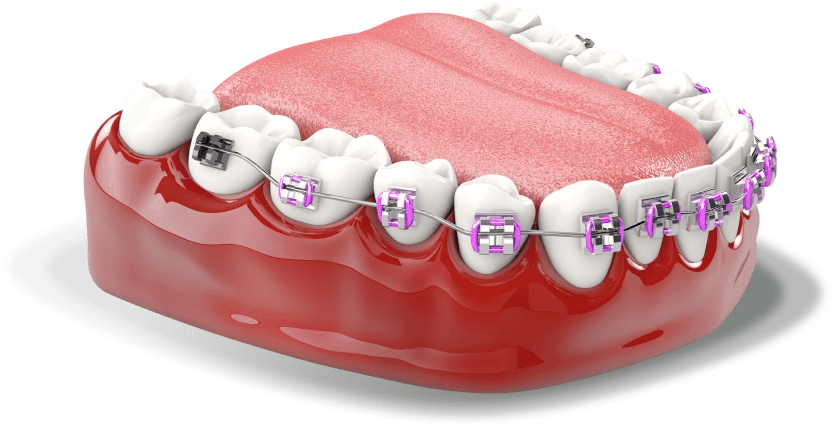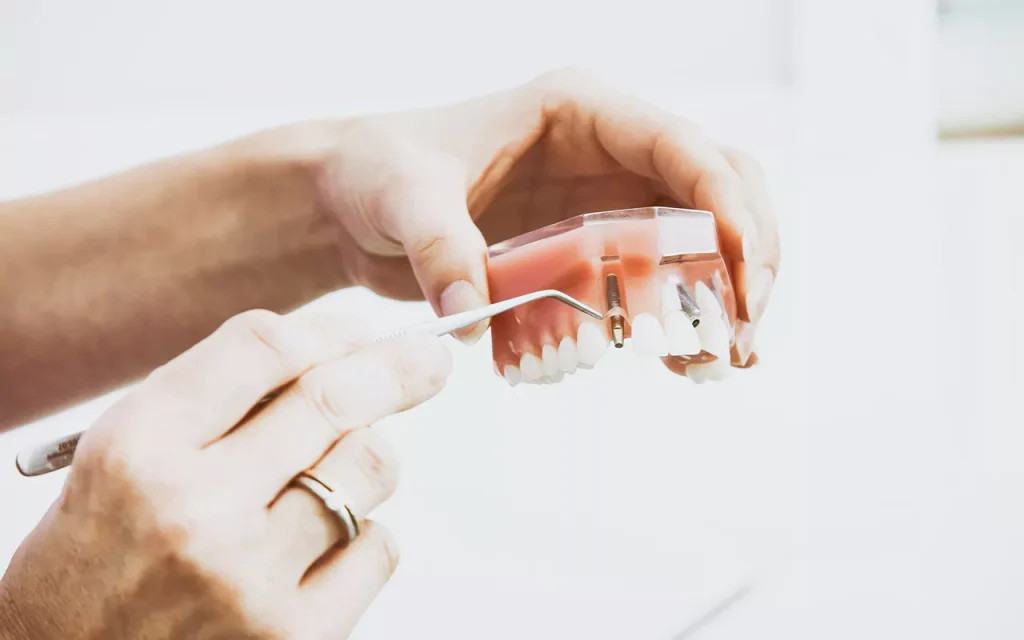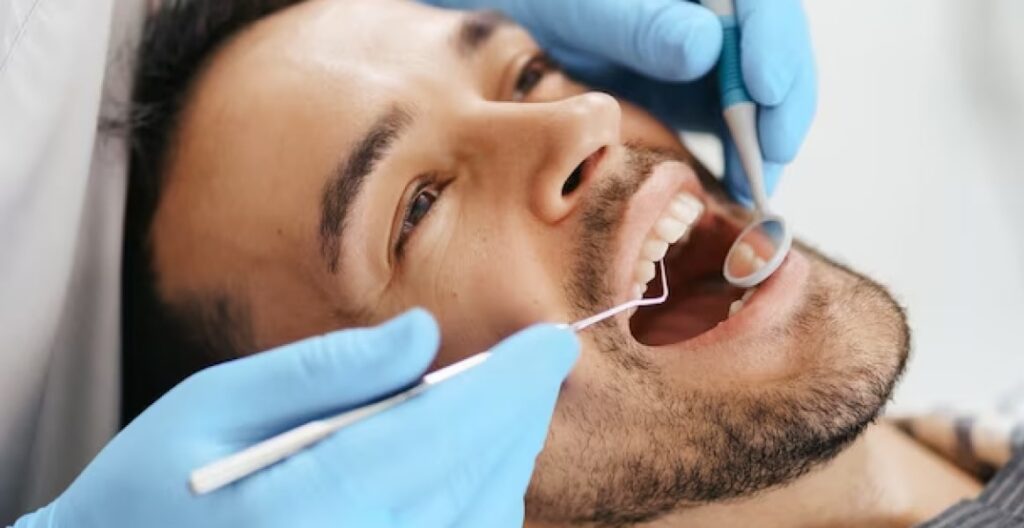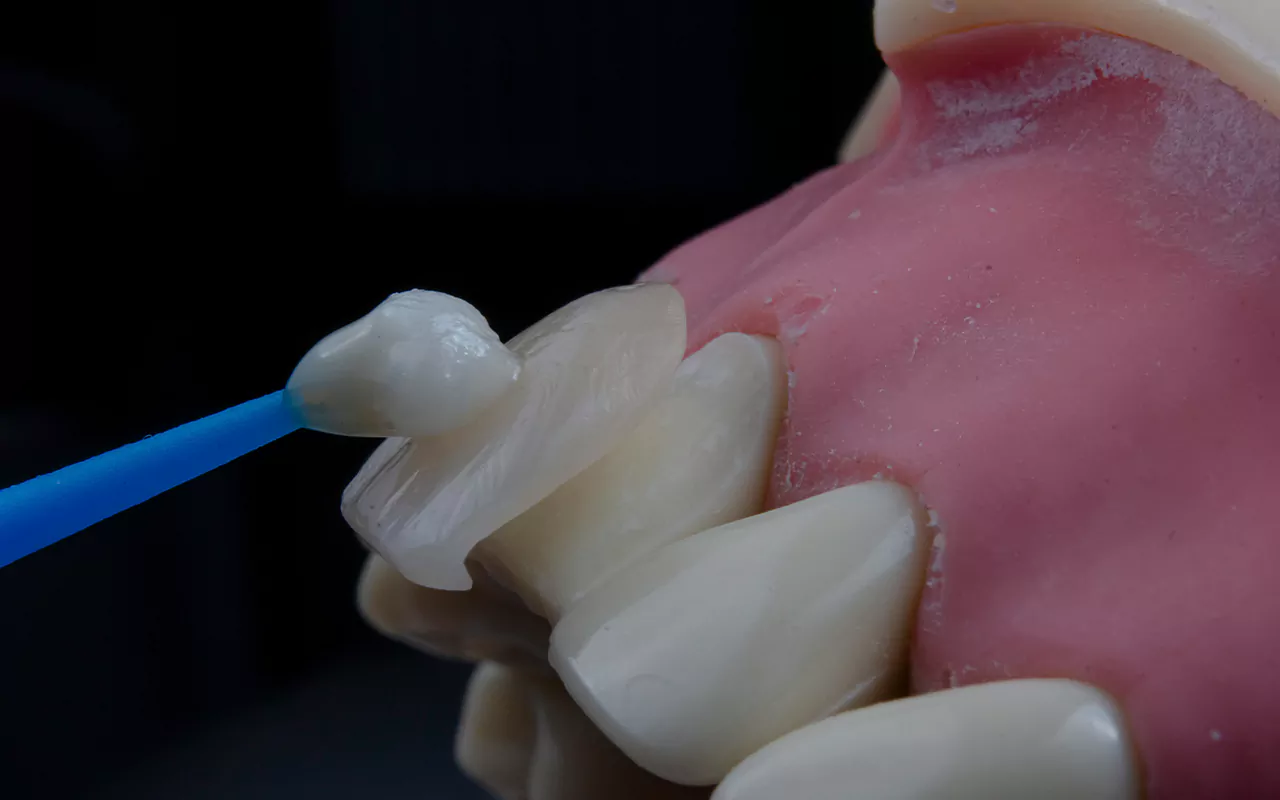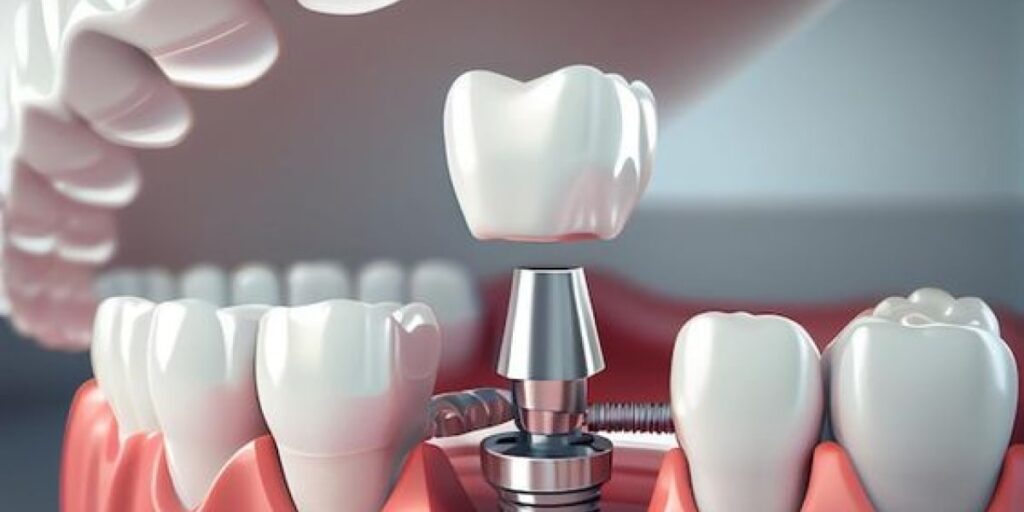What is Dental Restoration?
Dental restoration, often known as “filling,” is one of the most common treatments for dealing with tooth decay—an experience almost everyone faces in their lifetime. This vital procedure is offered daily at Dr. Sherafati Dental Clinic, utilizing the knowledge and skill of experienced dentists and the use of premium restorative materials.
If you are looking for the highest quality treatment for your tooth decay, this clinic, as a leader in providing dental restoration services in Gorgan, is ready to serve you. To help you make an informed decision and increase your knowledge, free consultations and check-ups are available.
When a tooth develops decay, the dentist carefully removes the damaged and infected tissue. The resulting cavity is then filled with special materials. A diverse range of restorative materials is available for this purpose. The two most common materials are composite (tooth-colored) and amalgam (silver-colored). Composite, due to its color matching with the tooth structure, offers a more natural appearance.
On the other hand, amalgam, owing to its high strength and durability, is a suitable option for restoring the back (molar) teeth. The variety of dental restoration methods allows for multiple options to improve the condition of decayed, damaged, and fractured teeth. This treatment approach not only helps preserve oral health but also enhances a person’s self-confidence by reviving the beauty of their smile. Ultimately, relying on the dental restoration treatment method can help you recover an attractive and pleasant smile.
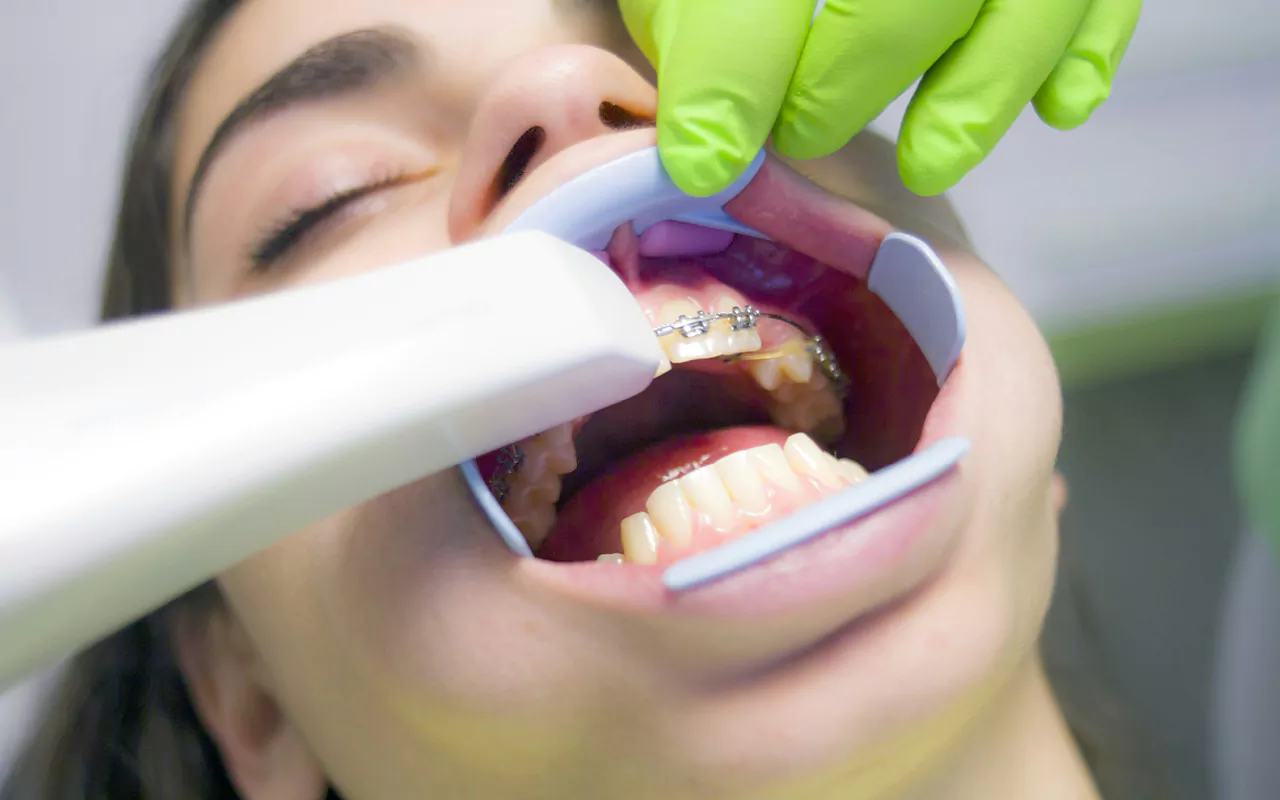
What is Meant by Minor Dental Damage?
Minor dental damage refers to limited, surface-level problems that appear on the tooth enamel, which is a vital protective barrier. Fortunately, these damages are stoppable and even reversible in their early stages and can be fixed with simple restorative interventions. One reason for emphasizing six-month periodic dental check-ups is to identify these small issues early and prevent them from progressing into more serious problems.
This continuous monitoring allows for quicker and less expensive repair. Therefore, by having regular visits, you can effectively prevent the occurrence of more complex oral and dental complications, or, if necessary, start timely and cost-effective treatments. This preventive approach will guarantee the preservation of tooth health and beauty in the long term.
What Factors Contribute to this Minor Damage?
Multiple factors can compromise the health of the tooth enamel and lead to these issues. Below are some of the most important ones:
Superficial Tooth Decay: This type of decay, which is limited to the enamel in its early stages, appears as white spots or slight discoloration on the tooth surface. Early detection and fluoride treatment can stop its progression.
Minor Chipping: Slight trauma or improper pressure can lead to small chips on the edges of the teeth. This issue, besides creating an unfavorable appearance, can also increase tooth sensitivity.
Discoloration and Staining: Consuming certain foods and drinks, smoking, and poor oral hygiene can cause surface stains and discoloration of the tooth enamel. These changes are often correctable with bleaching or scaling (cleaning).
Minor Cracks: Repetitive stress, teeth grinding (bruxism), or sudden impact can lead to tiny cracks in the enamel. If left untreated, these cracks can develop into more serious fractures.
What are the Initial Treatments for Minor Dental Damage?
1. Fluoride Therapy and Fissure Sealant Therapy
Very minor decay in its early stages is fortunately stoppable and even reversible with timely intervention. One of the most effective methods for this is fluoride therapy. Fluoride therapy involves the topical application of fluoride to the surface of the teeth, whether they show microscopic decay or are completely healthy.
This procedure, which is most common in pediatric dentistry, is also beneficial and permissible for adults. Fluoride works by strengthening the tooth enamel, preventing the progression of decay, and can even accelerate the process of enamel remineralization. This is known as the simplest restorative solution for teeth in the earliest stages of decay, where the damage is not even visible to the naked eye. This preventive measure is extremely important for maintaining dental health.
In addition to fluoride therapy, fissure sealant therapy is also considered an effective preventive measure. Fissure sealants are resin materials placed on the grooves and pits of the chewing surfaces of the teeth, creating a physical barrier against the accumulation of plaque and bacteria. This method is specifically used to prevent future decay and is often recommended after fluoride therapy, but it can also be done alone.
This preventive approach is particularly important for children and adolescents whose oral hygiene may not be perfectly maintained. These measures, combined with good oral hygiene practices, can play an effective role in preserving the health and longevity of the teeth.
2. Superficial Dental Restorations
The removal of very minor decay and the application of composite material to the tooth surface is the second treatment performed at this stage.
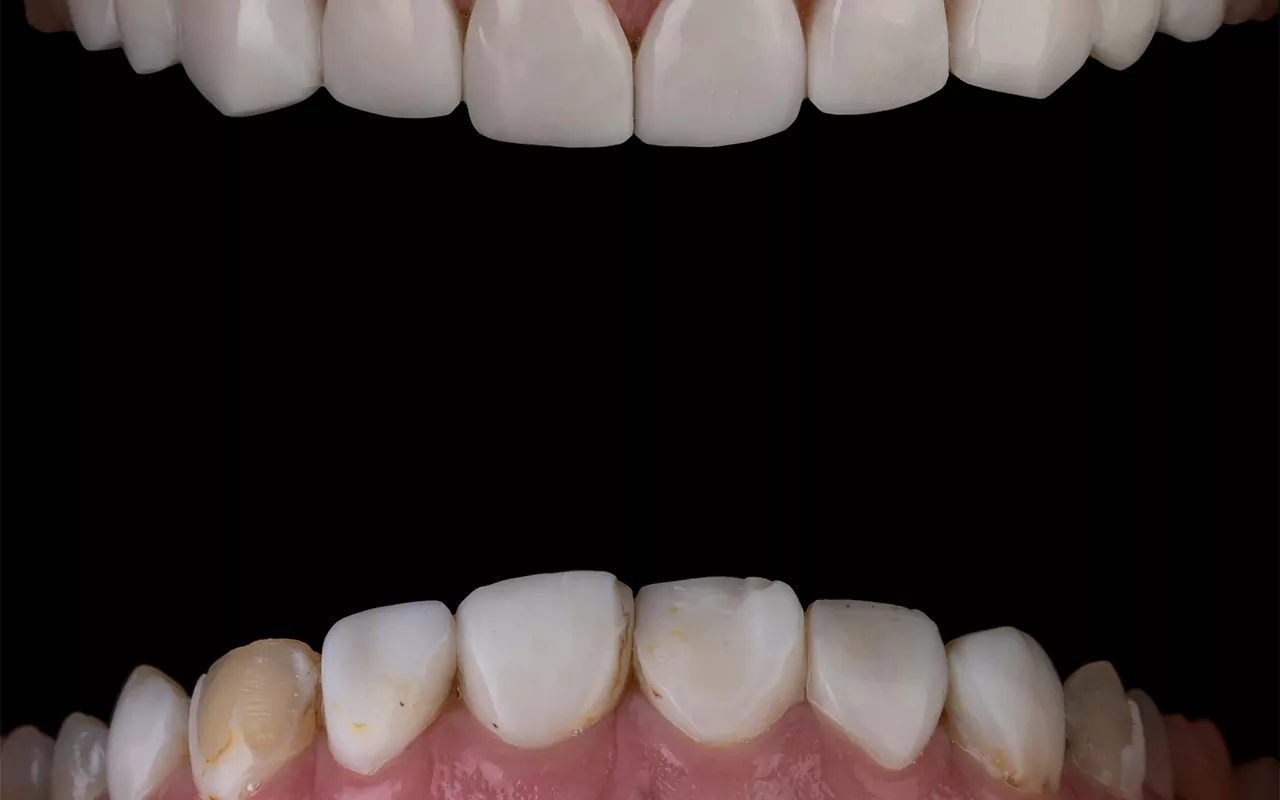
What is Meant by Progressive and Moderate Damage?
Ignoring early decay and the signs of minor dental damage can gradually lead to the spread and deepening of the harm. In this situation, the decay might affect the crown of the tooth and penetrate its underlying structures, including the dentin and the pulp (nerve). This progression results in more serious consequences.
The signs and symptoms of dental damage at this moderate stage cover a wide range, and some of the most important ones are listed below. These symptoms are a serious warning to visit a dentist and receive proper treatment. Delaying treatment can lead to more complex and costly complications.
These warning signs include:
Toothache: Continuous or intermittent pain that can range from mild to severe. This pain is often a sign that the nerve of the tooth is involved.
Tooth Sensitivity: An unpleasant feeling or a sharp, short pain when consuming cold, hot, sweet, or sour foods or drinks. This sensitivity is caused by the erosion of the enamel or dentin.
Gum Pain: Inflammation, redness, swelling, or bleeding of the gums, which can be caused by infection or irritation from the decay. This condition can lead to gum disease and jawbone loss.
Dental and Gum Abscess: The buildup of pus around the tooth root (dental abscess) or in the gum tissue (gum abscess), which is accompanied by severe pain, swelling, and sometimes fever. An abscess is a dental emergency and requires immediate treatment.
Bad Breath (Halitosis): Unpleasant mouth odor that can be caused by bacterial accumulation in cavities, gum infection, or other oral problems. This issue can negatively affect a person’s social life.
Other Symptoms: In addition to the above, other signs may appear, including tooth discoloration, loose teeth, difficulty chewing food, and swollen lymph nodes in the neck. If you notice any of these symptoms, a visit to the dentist is necessary.
What Are the Most Important Causes of Moderate Dental Damage?
Dental damage can vary from surface-level and minor to deep and extensive. In cases where the damage has penetrated the deeper tooth structure, more complex restorative interventions are required. Here, we will examine some of these advanced types of damage and the associated treatment approaches. This information will help you better understand how to manage these issues and the importance of timely treatment. The accurate diagnosis of the type and severity of the damage is the responsibility of a specialized dentist.
Some of these advanced damages include:
Deep Decay: This type of decay penetrates into the deeper layers of the tooth, including the dentin and even the pulp (the tooth’s nerve center). In this condition, there will be severe pain, sensitivity, and possibly infection.
Dental Erosion: This condition is caused by the repeated contact of teeth with acidic substances, such as carbonated drinks or stomach acid. Erosion causes the gradual loss of tooth enamel and increased sensitivity.
Deep Cracking (into the Dentin Layer): Cracks that reach the dentin layer of the tooth can cause severe pain and sensitivity and, if left untreated, increase the risk of tooth fracture.
Dental Fractures: Fractures can result from trauma, excessive pressure, or advanced decay, and they can range from small cracks to extensive fractures of the tooth crown or root.
What is the Treatment for Teeth with Moderate Damage?
When the damage to a tooth is relatively serious but has not yet reached the dental pulp (the soft inner tissue containing the nerve and blood vessels), restorative methods without the need for root canal treatment are possible. These approaches aim to preserve the natural tooth structure and prevent further complications. In such cases, restoration without a root canal includes the following:
1. Dental Filling
After removing the decay and addressing minor to moderate tooth damage, the most common restorative approach is to fill the tooth using materials like composite or amalgam. These materials restore the tooth’s structure and function by filling the created cavities. After cleaning out the decayed tissue, the dentist carefully washes and dries the tooth.
Then, based on the patient’s preference or the dentist’s diagnosis, the cavities are filled and sealed with the appropriate restorative material. This process is carried out to maintain the health and integrity of the tooth. The choice of filling material depends on factors such as the location of the tooth, the extent of the damage, and aesthetic considerations.
2. Composite Bonding
The dental bonding technique is recognized as one of the best options for restoring broken, chipped, partially cracked, and eroded teeth. This method restores strength and beauty to the tooth by creating a strong bond between the composite material and the tooth surface. More precisely, composite bonding means attaching the composite material to the damaged area of the tooth.
In this procedure, the tooth surface is prepared with special agents, and then thin layers of composite are applied. These layers are cured (hardened) using a special light and bonded to the tooth. This technique not only repairs the tooth structure but also creates a significant improvement in its appearance. This method is highly popular due to its preservation of the natural tooth structure and its minimally invasive nature.
3. Inlay and Onlay
Inlays and Onlays are two distinct types of dental restorations most often used to repair posterior (molar) teeth. These methods offer effective solutions for restoring more extensive damage in these teeth. When the chewing surface of a tooth is widely damaged or decayed, an Inlay is used for its restoration. An Inlay precisely fills the cavity created on the chewing surface.
However, when, in addition to the chewing surfaces, the tooth cusps (the pointed projections on the biting surface) are also involved in the damage, an Onlay restoration is performed. An Onlay covers a wider area of the tooth, encompassing the cusps as well as the chewing surface. This difference in coverage and function is fundamental to these two types of restorations.
Inlays and Onlays are classified as indirect dental restorations. “Indirect” means that these restorations are fabricated in a laboratory setting and outside of the patient’s mouth. This process allows for greater precision and detail in the construction of the restorations. The dentist takes a precise impression of the molar teeth using special materials and sends this accurate mold to the dental laboratory.
Laboratory technicians use high-quality materials and the provided impression to meticulously craft the Inlay or Onlay restorations. After a few days or weeks, the finished restorations are returned to the dental office for the dentist to bond them onto the patient’s tooth using special adhesive cements. This process requires high precision and skill from the dentist to ensure the restoration fits the tooth perfectly.
Comparing Amalgam and Composite Materials
In the field of dental restoration, choosing the appropriate material to fill cavities caused by decay or damage has always been of particular importance. Among the options, amalgam and composite are two common choices, each with its own specific characteristics, advantages, and disadvantages. A careful review of these features greatly assists both the patient and the dentist in making a more informed selection. This comparison covers various aspects of these two materials and leads to a comprehensive understanding of them.
Advantages of Amalgam Dental Restorations:
Superior Strength: Due to its metallic structure, amalgam possesses higher strength and resistance against chewing pressures. This characteristic makes it a suitable choice for restoring posterior (molar) teeth, which are subjected to greater force.
Economic Cost: Compared to composite, using amalgam is typically associated with a lower cost. This factor can be an important priority for some patients when choosing the type of restorative material.
Fast Application Speed: The process of filling a tooth with amalgam is generally completed faster than with composite. This can be an advantage for time-constrained patients.
Infection Certainty: Numerous studies have confirmed the safety and absence of serious side effects when using amalgam. This provides reassurance to patients using this material.
Ease of Use for the Dentist: Working with amalgam is easier for dentists than working with composite, due to its physical properties.
Advantages of Composite Dental Restorations:
Exceptional Aesthetics: Composite has the ability to match the color of natural teeth, giving it a significant aesthetic advantage over amalgam. This makes it an ideal choice for restoring anterior (front) teeth that are visible.
Preservation of Tooth Structure: The composite restoration process requires less removal of healthy tooth structure. This helps preserve more of the natural tooth tissue.
Rapid Setting: Composite materials are quickly hardened and set using a special light. This feature reduces the treatment time.
Strong Bond with the Tooth: Composite establishes a strong chemical bond with the tooth structure, which contributes to the strength and durability of the restoration and helps prevent tooth fracture.
Diverse Applications: Composite allows for various types of dental restorations, and it’s even possible to repair only the damaged section instead of replacing the entire restoration.
Considering these points, the choice between amalgam and composite should be made in consultation with the dentist and based on the specific condition of the tooth and the patient’s needs. Each of these materials can be the appropriate choice in different situations.
What is the Best Material for Dental Restoration?

Choosing the right material for a dental filling is an important decision that requires careful consideration of various factors. Before selecting the best material, paying attention to a few basic points is essential. These considerations help lead to a more informed choice and a better outcome. A correct understanding of these factors plays a significant role in treatment success.
These key points include:
Occlusal Pressure Tolerance: For individuals who have a habit of putting high pressure on their teeth (like teeth grinding or clenching), amalgam will be the preferred choice. This is because amalgam has higher compressive strength, which prevents the restoration from fracturing under heavy chewing forces. This feature makes amalgam a suitable choice for back teeth (posteriors).
Size of the Dental Cavity: In cases where the resulting cavity is large, using amalgam is more appropriate due to its greater strength and ability to withstand higher forces. Conversely, where the cavity is smaller and subjected to less pressure, composite performs better. This balance between the restorative material and the cavity size affects the durability and lifespan of the restoration.
Metal Sensitivity: If there is a history of sensitivity or allergy to the metals in amalgam (especially mercury), using composite is recommended as a biocompatible, alternative solution. This prevents adverse reactions.
Risk of Caries Recurrence: In situations where there is a risk of secondary decay (recurrence of decay around the restoration), the use of amalgam is advised due to its sealing property. Amalgam helps prevent the accumulation of plaque and decay-causing bacteria at the restoration margins by filling microscopic spaces. This feature aids in preventing future decay.
Aesthetic Location: If the restored tooth is in a highly visible area of the mouth (like the front teeth), using composite resin offers better aesthetics due to its color-matching ability with natural teeth. This is particularly important for individuals who prioritize the appearance of their teeth.
In summary, the choice between amalgam and composite requires a careful assessment of the tooth’s condition, the patient’s needs, and consultation with a specialized dentist. Each of these materials has unique advantages and disadvantages that must be considered during the decision-making process.
What is Considered Serious and Significant Damage (with Infection)?
These three layers are:
Enamel: The outermost layer of the tooth is a very hard, white substance that covers the crown and protects it from mechanical and chemical damage. Enamel is the hardest substance in the human body.
Dentin: A layer softer than enamel, located beneath it, and has a light yellow or brownish color. Dentin contains sensitive nerve endings that react to various stimuli like pain, cold, and heat. This sensitivity plays an important role in diagnosing dental problems.
Pulp: The innermost part of the tooth, which includes blood vessels, nerves, and other living tooth tissues. The pulp is responsible for nourishing the tooth and transmitting sensory signals. The health of the pulp is vital for the tooth’s survival.
When dental damage passes through the two outer layers (Enamel and Dentin) and reaches the Pulp, severe and often unbearable pain is usually felt. This pain is a sign of nerve involvement. If the pulp becomes contaminated or infected (usually due to deep decay or tooth fractures), root canal treatment must be performed first.
In this process, the infected or inflamed pulp tissue is removed, and the inner space of the tooth is cleaned and filled. This action prevents the infection from spreading to surrounding tissues and saves the tooth from being lost.
What Are the Most Important Restorations Needed After a Tooth Infection?
The dental pulp, as the vital and living part of the tooth, can become contaminated and infected due to various factors. This condition requires specialized dental intervention to prevent more serious consequences. Understanding the factors contributing to pulp contamination is crucial for timely prevention and treatment. These factors encompass a wide range of dental injuries.
Factors that can lead to dental pulp contamination are:
Severe, Penetrating Decay with Tooth Infection: Deep cavities that pass through the enamel and dentin and reach the pulp can allow bacteria to enter and cause infection in this soft tissue. This type of decay is often accompanied by severe pain and tooth sensitivity.
Severe, Penetrating Tooth Fracture: Deep tooth fractures, especially those that reach the pulp, can provide a pathway for bacteria to enter and contaminate the pulp. This type of damage is usually caused by trauma or accidents.
Loss of the Majority of the Tooth Crown: The loss of a significant portion of the tooth crown, for any reason (like severe decay or trauma), can expose the pulp to external factors and contamination.
Tooth Root Decay: Decay that occurs in the root area of the tooth can directly affect the pulp and lead to its infection. This type of decay is usually caused by gum disease or gum recession.
The Most Important Restorative Approaches After Tooth Infection
When the dental pulp becomes infected, specific treatment approaches are required to save the tooth and eliminate the infection. In this situation, the primary goal is to remove the contaminated tissue and prevent the infection from spreading to surrounding areas.
Root Canal Treatment (Endodontic Therapy)
Root canal treatment is recognized as the most effective method for restoring infected teeth. If a root canal is not performed, the infection will spread throughout the pulp and can lead to a dental or gum abscess, jawbone infection, and even the spread of infection to other parts of the body. These complications can be very serious and dangerous. During the root canal process, an endodontist or general dentist first numbs the tooth and then removes the decayed tissue.
Next, using fine dental instruments (files), the infected pulp tissue is removed, and the root canals are cleaned and disinfected. Finally, the internal space of the tooth is filled with a special material (usually gutta-percha), and the tooth is prepared for subsequent restorative stages, such as filling, build-up (coronal reconstruction), or a dental crown. This process is performed to save the tooth and prevent its extraction.
Filling the Root-Canaled Tooth
In most cases where a tooth has been infected and undergoes root canal treatment, the final restoration is achieved with a simple filling. The dentist fills the endodontically treated tooth using materials like composite, amalgam, or other filling agents. This procedure is usually done a few days to a few weeks after the root canal is completed to ensure the infection is completely eradicated. Filling the tooth prevents the re-entry of bacteria into the root canal system.
Tooth Build-up and Reconstruction
Build-up is recognized as one of the best and most modern methods of restoring a tooth after a root canal. In this technique, the tooth crown is reconstructed using materials like composite and amalgam without the need to trim away healthy tooth structure. Build-up is a conservative approach that ensures maximum preservation of the natural tooth structure.
The tooth build-up process may be slightly time-consuming, but it ultimately provides the tooth with a natural shape and desirable strength. Dentists use this restorative technique not only to give the teeth a natural form and appearance but also to restore the teeth’s original function, aiding in speech and chewing. This method is an ideal option for restoring teeth damaged by decay or fracture.
Dental Crown
The dental crown is considered the last resort for restoring a damaged tooth. When it is impossible to revive or reconstruct the tooth using any other method, dentists use a crown as the final option. This method is recommended when the tooth structure is severely compromised.
Crowns are essentially dental prosthetics that replace the damaged tooth crown. These artificial crowns are usually used following extensive and deep dental restorations, such as root canal treatment. Today, the goal is to reconstruct a root-canaled tooth using the build-up method whenever possible, and to only use a crown when a build-up is not feasible. This approach helps preserve more of the natural tooth structure.
Crowns come in different types and are fitted through a more invasive procedure than a build-up. To place a crown, it is necessary to trim approximately 2 mm of the tooth structure all around the crown (even if the underlying enamel is healthy). In contrast, a tooth restoration with a build-up is a completely conservative method and is the preferred option for restoring root-canaled teeth.
Irreversible Damage
Sometimes, tooth decay is so extensive that significant portions of the tooth structure are lost or severely fractured. For example, only the tooth root might remain, and the dental pulp may be acutely infected. In such circumstances, conventional restorative approaches are not effective, and after performing a root canal (if possible), there is no choice but to extract the tooth. This situation is more common with molar (back) teeth.
Molar teeth, due to their anatomical position at the back of the dental arch and the difficulty in accessing them for cleaning and visual examination, are prone to more extensive and irreversible damage. The lack of easy access and the inability to view them directly can lead to the silent progression of decay and other damage. This underscores the importance of periodic dental check-ups.
After extracting damaged teeth that are no longer salvageable, it is essential to fill the empty space using appropriate dental prosthetics. This replacement not only helps improve the look and aesthetics of the smile but also prevents the shifting of adjacent teeth and the occurrence of temporomandibular joint (TMJ) problems.
The most important and best options for replacing missing teeth include dental implants, dentures (partial or complete prosthetics), and dental bridges. Each of these methods has its own characteristics, advantages, and disadvantages. The choice of the appropriate method depends on the patient’s clinical condition, the number of missing teeth, the condition of the jawbone, and other factors determined by a specialized dentist.
Is Dental Restoration Possible at Home?

Is Dental Restoration Possible at Home?
In today’s world, many recommendations are heard regarding at-home dental restoration; numerous articles are even published online promoting methods like oil pulling (swishing oil in the mouth) or placing garlic on the tooth as home remedies.
These kinds of methods are often suggested as ways to treat dental problems, relying on traditional beliefs or unscientific information. However, it must be noted that these measures can only offer temporary pain reduction or minor relief from some dental discomforts. These actions are palliative, not curative.
Fundamental dental problems, such as tooth decay, which is a complex and progressive process, or the destruction of the tooth root, which requires specialized intervention, are absolutely not fixable with home methods. These conditions require accurate examination and treatment by a specialized dentist.
Tooth decay is caused by bacterial activity and the destruction of the tooth structure, requiring the removal of decayed tissue and filling the resulting cavity with specialized dental materials. This process requires the specialized equipment and knowledge available in a dental setting. Similarly, problems related to the tooth root, such as infection or damage to the nerve, require a root canal (endodontic treatment) or even tooth extraction by a dentist.
Therefore, relying on home remedies to treat these problems is not only ineffective but can also lead to a delay in proper treatment and worsen the problem. It is recommended that if any dental problem occurs, a dentist should be consulted for accurate diagnosis and appropriate treatment.
Post-Dental Aesthetics Care
After having dental restorations, observing a set of care guidelines is especially important to accelerate the healing process and prevent potential complications. This care includes measures related to diet, oral hygiene, and the management of any potential post-treatment discomfort. Following these instructions greatly helps preserve the health and longevity of the restorations performed.
The first step after restoration is to avoid chewing food in the treated area for at least 24 hours. This rest gives the restorative material sufficient time to harden and gain strength. This prevents displacement or damage to the fresh restoration.
Due to the use of local anesthesia, the area around the tooth may be numb for a few hours; therefore, it is recommended to avoid unintentionally biting your lip, cheek, or tongue during this time. This precaution prevents accidental harm to the soft tissues of the mouth.
It is completely normal to experience slight discomfort after a restoration. You may even have a temporary decrease in the desire to eat. This condition is usually temporary and resolves within a few days.
For greater comfort and possible pain relief, you can use appropriate pain medication after consulting your dentist. Self-medication is not recommended and should be done under a doctor’s supervision.
If you feel that the tissue around the restored tooth is slightly irritated and painful, rinsing your mouth and gums with warm salt water for a few days can be very beneficial. This helps reduce sensitivity and potential inflammation. The use of a salt-water solution is a traditional and effective method for reducing inflammation and soothing pain.
For about two weeks after the dental restoration, your teeth may be sensitive to temperature changes (hot or cold). It is recommended to avoid consuming very hot or very cold foods and drinks during this recovery period. This avoidance prevents over-stimulation of the tooth and the creation of sensitivity. During this time frame, using desensitizing toothpaste can also be helpful.
What is the Best Material for Dental Filling?
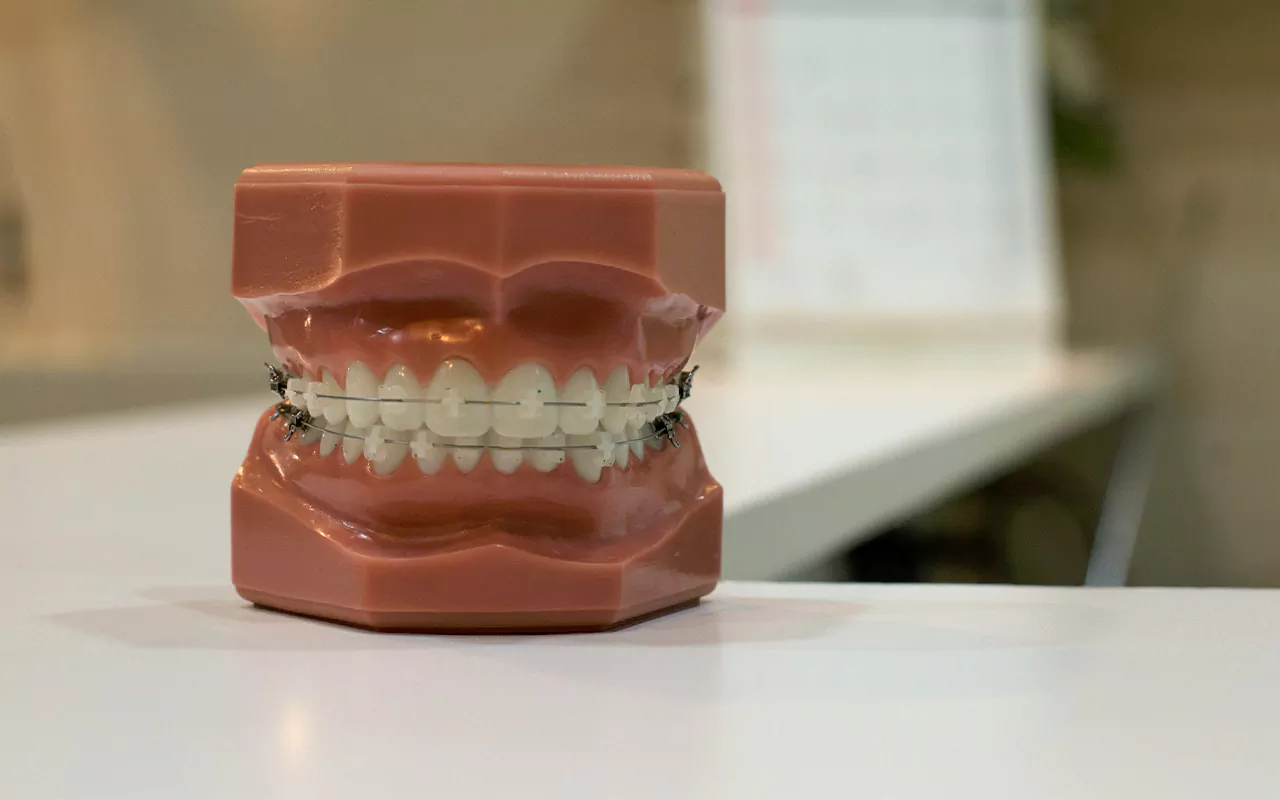
The choice of the appropriate material for dental restoration is a pivotal decision for treatment success. Before determining the best material for filling a tooth, numerous factors must be explored. These considerations, by weighing the characteristics of each material against the specific condition of the tooth, enable an informed selection.
1. Size of the Dental Cavity
Due to amalgam’s superior strength, its use is recommended when the cavity in the posterior (molar) teeth, which endure high pressure, is large. However, recent advancements in composite resin technology have somewhat blurred this distinction. Some recent research reports only minor differences in the performance of amalgam and composite in large restorations. Nevertheless, a 2010 study, which showed a low failure rate for composite, still judged amalgam’s durability to be superior in larger restorations. In cases where the restoration area is small, especially in parts of the tooth that are not under high pressure, the force exerted on the restorative material is minimal; thus, from this perspective, there is no difference between amalgam and composite.
2. Degree of Applied Pressure
One of the primary causes of dental restoration failure is cracking and fracture. For this reason, using composite is not recommended when force beyond the usual limit is applied to the restorative material. For example, in patients who habitually clench or grind their teeth (bruxism), amalgam is a more suitable option. A study published in 2015 cited restoration fracture as the main reason for composite restoration failure. This finding highlights the importance of considering occlusal forces when selecting a restorative material.
3. Risk of Secondary Decay
In some individuals, the risk of recurrent decay around the filling is high due to various reasons. In such circumstances, the presence of even microscopic gaps between the tooth and the filling material can promote the accumulation of plaque and decay-causing bacteria. Amalgam inherently possesses a sealing property. This occurs because changes in the metal’s structure fill any microscopic space between the restoration and the tooth.
However, in bonded restorations, such as composite, a slight shrinkage occurs during the light-curing process. Therefore, even if the composite is completely bonded to the tooth, it may still shrink slightly, potentially creating a microscopic gap between the tooth and the restorative material. In the 2015 study by Beck, recurrent decay was reported as the second leading cause of composite restoration failure.
4. Aesthetic Appearance of the Restoration
Composite is tooth-colored, and if a tooth restored with composite is visible, it is difficult to detect. This characteristic makes composite a more desirable and preferred option, especially in visible dental areas. The aesthetics of the restoration in these areas are of paramount importance. In contrast, amalgam has a significant color difference from the surrounding natural tooth and is easily noticeable.
5. Metal Sensitivity
Allergy to the metals present in amalgam, particularly mercury, is rarely reported. In these rare instances, using composite restorative materials is the only viable treatment solution. Research has documented fewer than one hundred cases of allergic reactions to dental amalgam. This low statistic indicates the high compatibility of amalgam with the majority of individuals.

